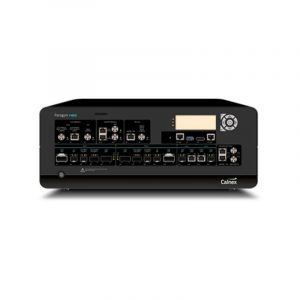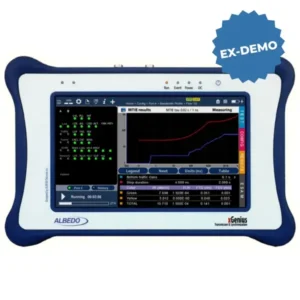OSA 5548c Timing Signal Generator (TSG) Scalable Synchronization Solution
SONET/SDH network synchronization solution
With four expansion shelves to the core unit, the OSA 5548c Timing Signal Generator (TSG) is scalable from 20 unprotected outputs to a thousand protected outputs. It is ideal for telecom operators looking to provide scalable network synchronization in overcrowded exchanges because of its ultra-compact footprint. Using the distributed intelligence message passing system of the OSA 5548C TSG, there are no single points of failure and reliable uptime is guaranteed. By sharing the same modules on the core unit and expansion shelves, the administrative complexity is minimized and homologation requirements are reduced.
Description
OSA 5548c Timing Signal Generator (TSG)
The OSA 5548C Timing Signal Generator (TSG) comes with universal input modules accepting a wide range of input signals. It is designed to reduce the amount of spares and manufactured in Meiningen, Germany by Oscilloquartz, an ADVA Optical Networking Company. Each input module can accept up to four signals, optionally protected by an identical, adjacent module. The OSA 5548C TSG offers four unprotected inputs as well as eight protected inputs. With its unique output module design, it offers 20 auto-configurable output interfaces. In other words, the ten universal output groups can be configured flexibly to accommodate configurations ranging from 20 unprotected inputs to 200 protected outputs on a single shelf. Mixing of protected and unprotected outputs is also supported. It also supports input and output modules capable of terminating and generating T1 and E1 signals. It can also be equipped with an NTP Stratum 1 server and high capacity IEEE 1588-2008 Version 2 PTP Grandmaster modules. This results in a more accurate frequency and phase timing distribution over packet networks.
Optional GPS modules are available to meet Stratum 1 and G.8272 PRTC requirements without the need to install and manage external receivers or cesium primary reference clock sources. This flattens the hierarchy of synchronization distribution, resulting in reduced provisioning, operation and maintenance expenses. The active reference input can be selected based on SSM value, a priority table or performance threshold masks. Jitter and wander on the reference input are filtered by a high-quality oscillator and DDS technology utilizing rubidium or double oven quartz technology.
Key Features and Benefits
- Unique design of master, expansion and remote shelves
- Universal output and input module/card design
- Intuitive and modular architecture adapted to all telecom node sizes
- Stratum 1 / ITU-T G.811 PRC with optional dual GPS cards and ITU-T G.812 Type I, II or III SSU holdover
- Fully manageable by TL1 and intuitive graphical user interface
- 1:1 protection for every card and function
- ITU-T G.8272 primary reference time clock (PRTC)
- GR-2830 Primary Reference Source (PRS)
- Optional PTP modules









